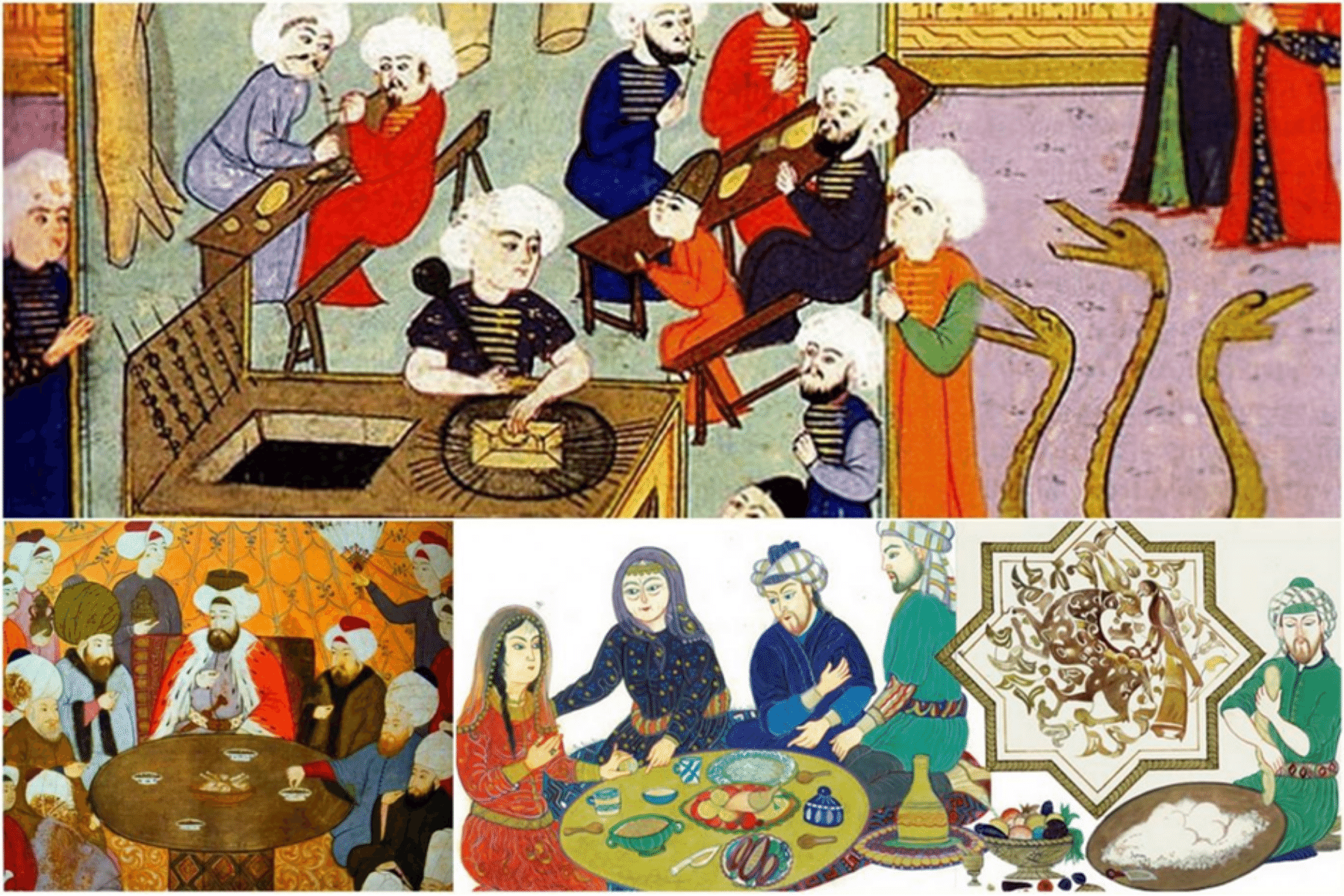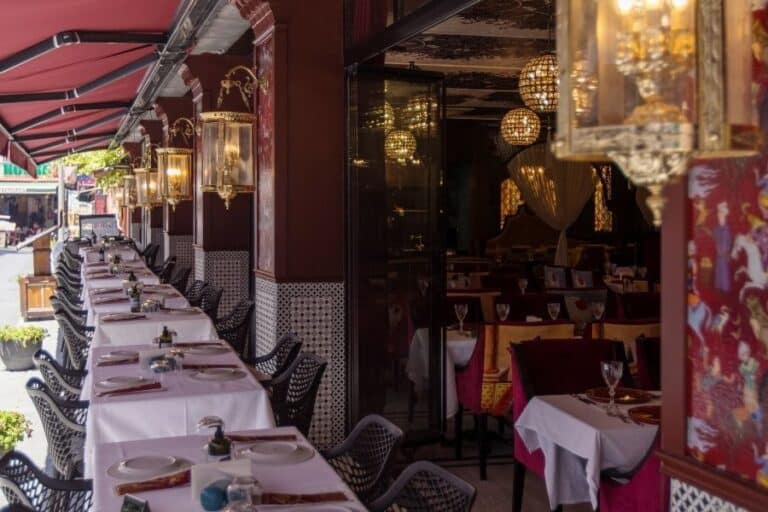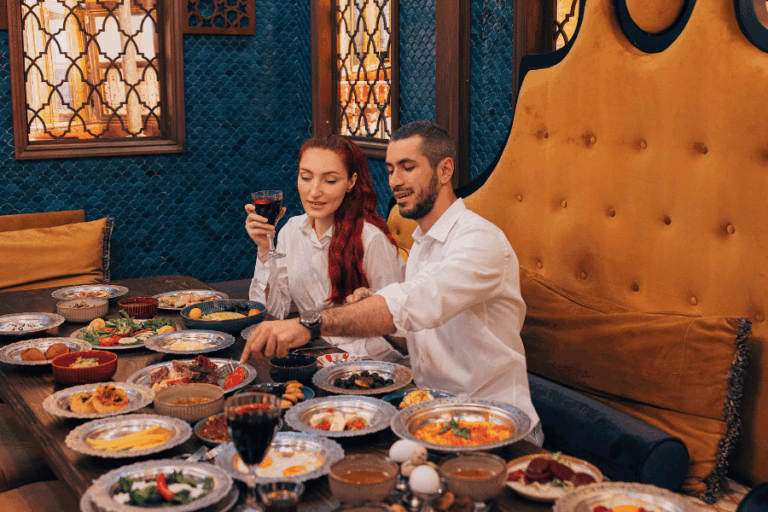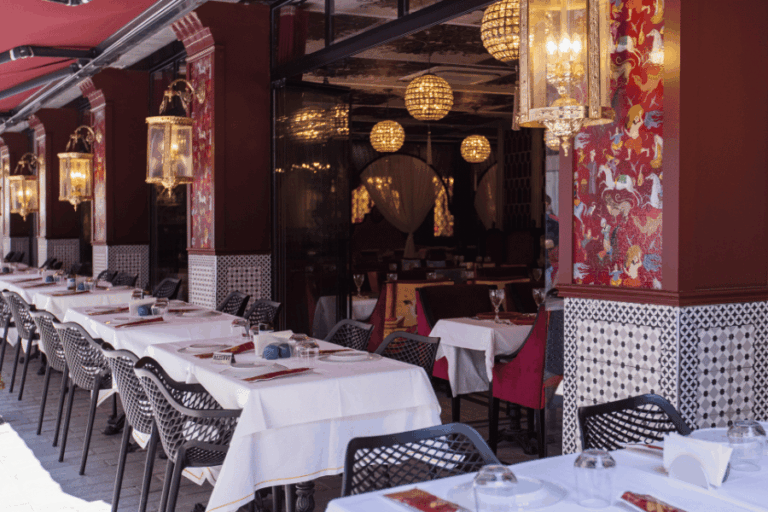The roots of Turkish cuisine, known as Anatolian cuisine, have a history and accumulation of 2 thousand years. Turkish and Anatolian cuisine is as ancient and powerful as Turkish history.
Chinese cuisine is one of the most influential and similar cuisines to Turkish cuisine. For example, it is said that the famous Kayseri ravioli was inspired by Chinese cuisine and brought to Anatolia. The fact that this dish, which is also consumed as manti in China, is found in the cuisine of both countries is based on a story that goes back to the historical origins of Sino-Turkish relations.
Food Culture is a Symbol of Societies
In many religious sources, the history of humankind begins with Adam, considered the father of mankind, eating the apple forbidden by God.
In addition, parables such as the last supper of Prophet Jesus, the table culture of Prophet Abraham, and the saying of the last prophet Muhammad, “It is not one of us who is full while his neighbor is hungry” make eating more than a habit.
In societies, social status, solidarity habits, and spiritual feelings are kept alive most vividly at the dinner table. There are countless traditional meals such as wedding dinners, funeral dinners, and circumcision dinners that bring communities together.
Although the geography, religion, and traditions of societies change the type and content of food, every society has a table culture.
The first factor that changes the eating culture is geography. The products grown in that region are the main factor determining the way society eats and drinks. In addition, the civilizations with which neighbors and relations are established also have a great impact on the formation of food culture.
Religion is one of the biggest factors that shape culinary culture. For example, the prohibition of alcohol-containing beverages in Islam caused a major change in the eating and drinking habits of Turks who adopted Islam.
Aesthetics and hygiene also brought major changes in the food culture of societies. This process, which started with the change in the tableware used for eating and cooking in Ottoman cuisine, was largely influenced by Europe.
Turks Succeeded in Preserving Meat
Living in the steppes of Asia, the Turks generally had a meat-based diet. Considering the geography and climatic conditions, horse and mutton were the most suitable food sources for the lifestyle of the Turks at that time.
Preserving meat was the biggest problem for the Turks in the steppes of Asia. For this reason, nomadic Turks made great advances in canning and fermentation methods.
Drying the meat, roasting it, using it as pastrami, or preserving it as sausage were among the most common methods.
The harsh living conditions of the Asian steppes had so specialized the Turks in these measures that dried meat and canned goods were among the most exported products to the Chinese.
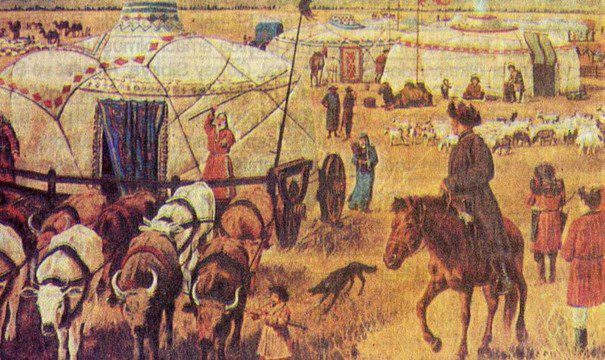
Apart from trade, the biggest advantage that this form of consumption gave the Turks was a military strategy. The ability to preserve this meat enabled thousands of troops to march to the most remote areas.
Many societies were forced to limit the room for maneuvering their armies due to the lack of food for their soldiers.
Again, the main factor that enabled the Turks to migrate to very distant geographies was the ability to preserve meat in this way in their dietary culture.
In addition to meat, dairy products were also a great advantage in terms of production and preservation. The Turks had made a major nutritional revolution by inventing yogurt. Later, they dried yogurt and used it in the production of tarhana and gained a great advantage over other societies.
Cradle of Turkish Cuisine: Seljuks
The Great Seljuk State was the first Turkish state to Islamize and enrich the cuisine of the Turks who settled down.
Blending Anatolia with the steppe culture, the Seljuks brought together past experiences with new civilizations.
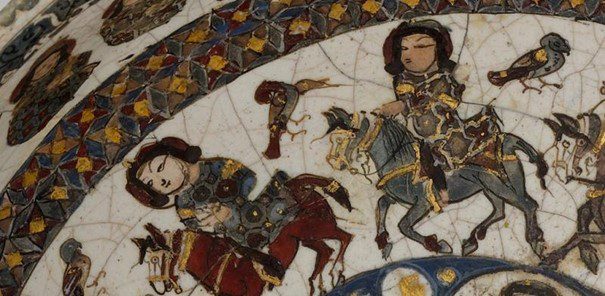
Turks did not eat pork even before Islamization. The most important reason for this was that pork was not a suitable animal for migration.
It is possible to say that Turks could not get used to pork even after they settled down. However, after adopting Islam, they removed this meat from their menu.
Another type of meat that began to be abandoned by Islam was horse meat.
During the Seljuk period, the mare’s milk kımız did not completely lose its place on the Turkish table; however, this tradition weakened over time and was largely abandoned during the Anatolian Seljuk period.
Turkish societies preferred to have two meals a day, one in the morning and one in the evening, as in the Ottoman example. The Seljuks, who preferred to have breakfast with dairy products, dates, and pastries, always ate meat for dinner.

Seljuk society was also an advanced society in agriculture as they moved from nomadic to settled life. They were especially good at growing grapes. This developed the production of molasses. Thanks to molasses, a strong dessert culture began to emerge in Turkish cuisine.
Molasses, which was used instead of sugar in many dessert preparations, would help establish the sweet habit. As time passed, desserts became as valuable a food as meat and bread in Turkish culinary culture.
The Golden Age of Turkish Cuisine: Ottoman
Before the establishment of the Ottoman Empire, the economy of the Osman Gazi Principality was largely based on the export of canned meats and dairy products.
The food culture gained many innovations thanks to the Germiyanids Principality, which joined the territory of the growing state in a short time. Because the Germiyanids had a rich table manner and menu diversity.
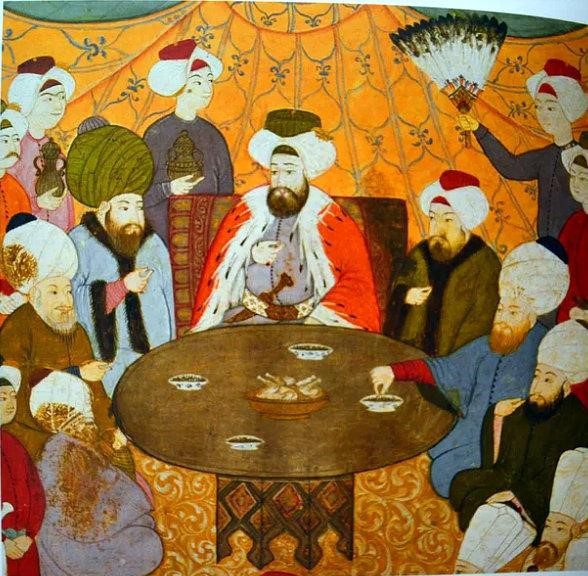
There were dozens of works on the Sultan’s table, treatises on manners and civanmerdnamas. Apart from all these written sources, unwritten etiquette rules were also carried into Ottoman culinary culture.
This led to the emergence of two main distinctions: palace cuisine and folk cuisine.
The Ottoman Palace Cuisine can be considered the pinnacle of Ottoman food culture. The meals of the palace people were made in the Matbah-ı Amire, which is estimated to have been established during the reign of Sultan Mehmet the Conqueror.
The Palace Kitchen worked almost like a giant food factory. Because meals were cooked for thousands of people every day. The sultan’s meals were prepared in the Kuşhane section, which served only the sultan and was located in a separate place within the Matbah-ı Amire.
The most consumed meat types in the Ottoman palace were mutton and chicken. The beef was not consumed much. The reason for this is interpreted as the dynasty’s people having an aversion to bovine meat.
In addition to sheep and chicken meat, turkey meat, goose meat, duck meat, peacock meat, partridge meat, and pigeon meat were also consumed extensively.
Until the 18th century, fish consumption was quite low, and only Fatih Sultan Mehmet is known to have been fond of fish meat among the sultans.
Milk desserts were the most preferred desserts in Ottoman cuisine. Baklava was considered a dessert of the people for centuries and could not enter the palace.
Food and table culture is one of the most important elements in the identity construction of societies. Food culture emerges as a result of the interaction of geography, religion, wars, and migrations.
Turkish and Anatolian cuisine is as old and powerful as Turkish history.



